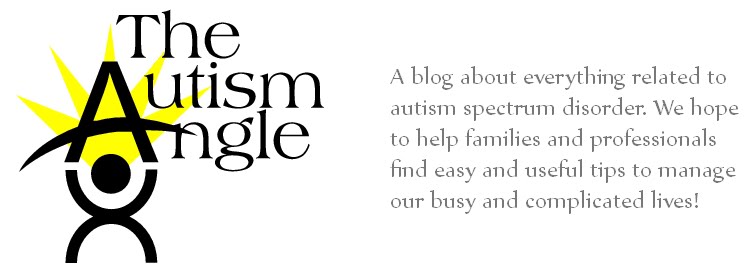Autism is a diagnosis that can be missed or mislabeled. In reviewing evaluations, I rarely see a child, adolescent or adult with only a diagnosis of autism. OCD, ODD, ADHD, Anxiety, Depression, Bipolar and/or Conduct Disorder are only a few of labels that are given to the individuals with autism. It is overwhelming for families to know what direction to go and what might be the primary or all-inclusive diagnosis.
Obsessive Compulsive Disorder (OCD) is one of many labels that is given to individuals with autism and not always for appropriate reasons. Comorbid is defined as, pertaining to a disease or other pathological process that occurs simultaneously with another. (Miller-Keane Encyclopedia and Dictionary of Medicine, Nursing, and Allied Health, Seventh Edition. © 2003 by Saunders, an imprint of Elsevier, Inc. All rights reserved) Comorbidity, or having multiple disorders, is not always as common as it appears.
According to the current Diagnostic and Statistical Manual of Mental Disorders (DSM-IV-TR), OCD is defined as such:
Obsessions as defined by (1), (2), (3), and (4):A. Either obsessions or compulsions:
Compulsions as defined by (1) and (2):(1) recurrent and persistent thoughts, impulses, or images that are experienced at some time during the disturbance, as intrusive and inappropriate and that cause marked anxiety or distress
(2) the thoughts, impulses, or images are not simply excessive worries about real-life problems
(3) the person attempts to ignore or suppress such thoughts, impulses, or images, or to neutralize them with some other thought or action
(4) the person recognizes that the obsessional thoughts, impulses, or images are a product of his or her own mind (not imposed from without as in thought insertion)
B. At some point during the course of the disorder, the person has recognized that the obsessions or compulsions are excessive or unreasonable. Note: This does not apply to children.(1) repetitive behaviors (e.g., hand washing, ordering, checking) or mental acts (e.g., praying, counting, repeating words silently) that the person feels driven to perform in response to an obsession, or according to rules that must be applied rigidly
(2) the behaviors or mental acts are aimed at preventing or reducing distress or preventing some dreaded event or situation; however, these behaviors or mental acts either are not connected in a realistic way with what they are designed to neutralize or prevent or are clearly excessive
C. The obsessions or compulsions cause marked distress, are time consuming (take more than 1 hour a day), or significantly interfere with the person’s normal routine, occupational (or academic) functioning, or usual social activities or relationships.
D. I another Axis I disorder is present, the content of the obsessions or compulsions is not restricted to it (e.g., preoccupation with food in the presence of an Eating Disorder; hair pulling in the presence of Trichotillomania; concern with appearance in the presence of Body Dysmorphic Disorder; preoccupation with drugs in the presence of a Substance Use Disorder; preoccupation with having a serious illness in the presence of Hypochondriasis; preoccupation with sexual urges or fantasies in the presence of a Paraphilia; or guilty ruminations in the presence of Major Depressive Disorder).
E. The disturbance is not due to the direct physiological effects of a substance (e.g., a drug of abuse, a medication) or a general medical condition.
At the 32nd Annual TEACCH Conference, we had the pleasure of attending presentations that helped to update Molly and myself regarding a variety of topics. Every year we are impressed with the information shared and this year was no exception. Jonathan Abramowitz, PhD., presented his expertise in the area of Obsessive Compulsive Disorder (OCD). OCD, can often be confused with a number of disorders, including Autism Spectrum Disorders.
Obsessions for those with OCD, cause great distress for the individual. They recognize that they are thoughts that they shouldn't have or that they are unrealistic. Compulsive behavior is performed to combat these thoughts and to help reduce anxiety in relation to their obsessions. It is quite upseting for individuals with OCD to experience these obsessive thoughts and they try to get rid of them.
Why is autism sometimes confused with OCD? Those individuals on the autism spectrum can display repetitive behaviors or thoughts. Although on the surface they may look similar, they are quite different. Those with autism aren't necessarily upset by the repetitious behavior they engage in. In fact, often those on the spectrum enjoy these behaviors and find them to be calming.
Dr. Abramowitz, presented some of the important distinctions between OCD and autism. This is a simplified description of the differences but important to analyse behaviors and their source. It can be a confusing area for parents and professionals to find the 'right' diagnosis. Asking questions, researching and finding specialists in those areas is most important.
-Abby

Thanks for the Info. Check this post,
ReplyDeletehttp://autismsd.com/autism-and-ocd-comorbidity/
I was diagnosed as HEPATITIS B carrier in 2013 with fibrosis of the
ReplyDeleteliver already present. I started on antiviral medications which
reduced the viral load initially. After a couple of years the virus
became resistant. I started on HEPATITIS B Herbal treatment from
ULTIMATE LIFE CLINIC (www.ultimatelifeclinic.com) in March, 2020. Their
treatment totally reversed the virus. I did another blood test after
the 6 months long treatment and tested negative to the virus. Amazing
treatment! This treatment is a breakthrough for all HBV carriers.